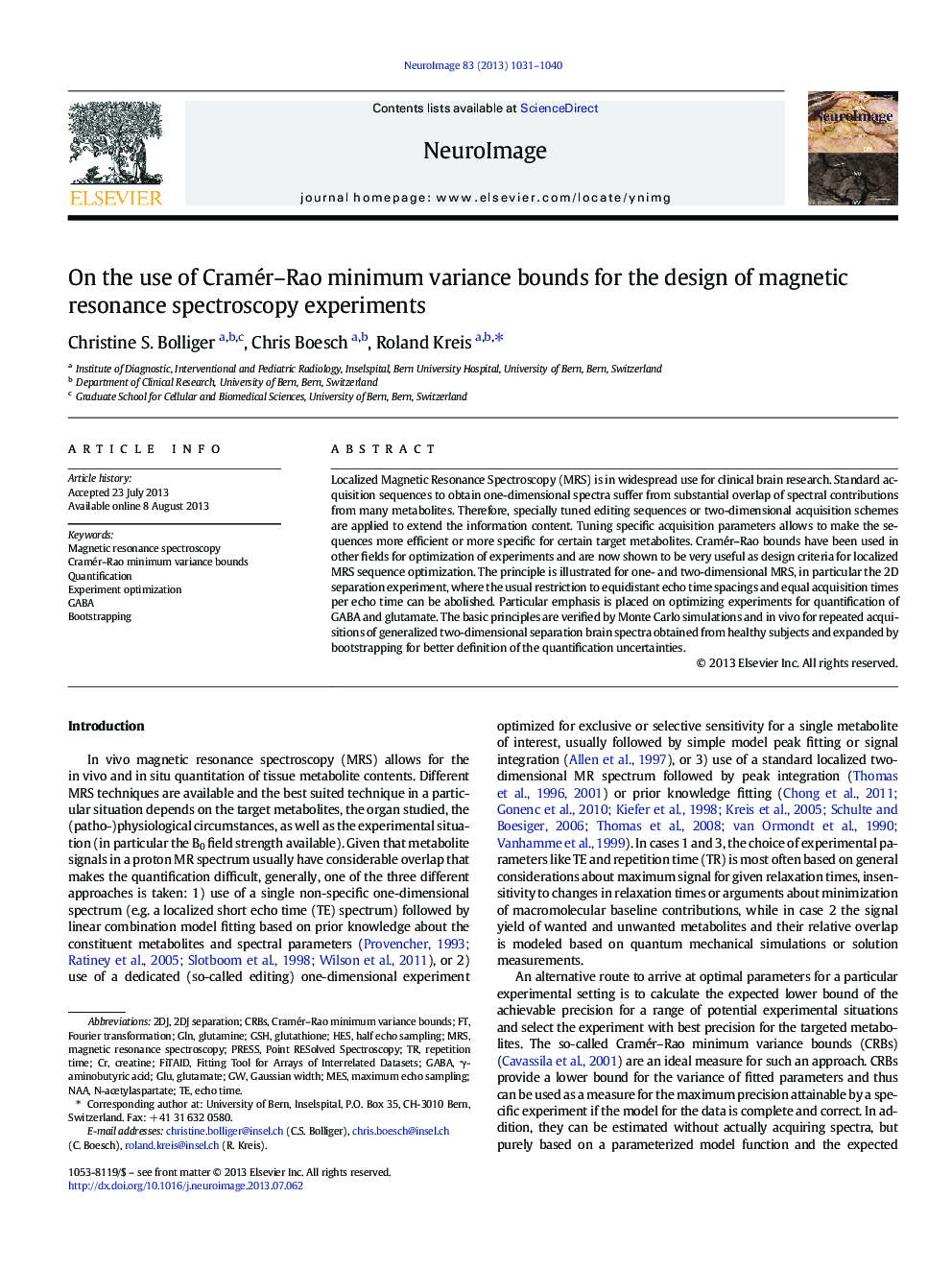| Article ID | Journal | Published Year | Pages | File Type |
|---|---|---|---|---|
| 6028313 | NeuroImage | 2013 | 10 Pages |
Abstract
Localized Magnetic Resonance Spectroscopy (MRS) is in widespread use for clinical brain research. Standard acquisition sequences to obtain one-dimensional spectra suffer from substantial overlap of spectral contributions from many metabolites. Therefore, specially tuned editing sequences or two-dimensional acquisition schemes are applied to extend the information content. Tuning specific acquisition parameters allows to make the sequences more efficient or more specific for certain target metabolites. Cramér-Rao bounds have been used in other fields for optimization of experiments and are now shown to be very useful as design criteria for localized MRS sequence optimization. The principle is illustrated for one- and two-dimensional MRS, in particular the 2D separation experiment, where the usual restriction to equidistant echo time spacings and equal acquisition times per echo time can be abolished. Particular emphasis is placed on optimizing experiments for quantification of GABA and glutamate. The basic principles are verified by Monte Carlo simulations and in vivo for repeated acquisitions of generalized two-dimensional separation brain spectra obtained from healthy subjects and expanded by bootstrapping for better definition of the quantification uncertainties.
Keywords
Related Topics
Life Sciences
Neuroscience
Cognitive Neuroscience
Authors
Christine S. Bolliger, Chris Boesch, Roland Kreis,
